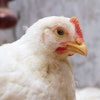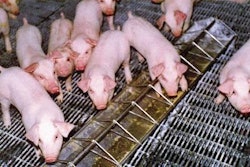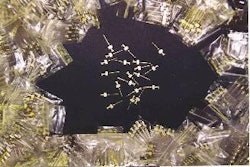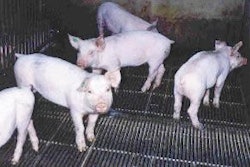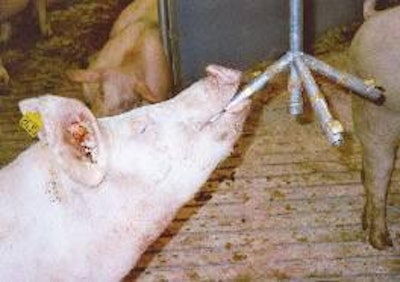
For some time now the manufacturers of water treatment products have warned that bacteria can form a sticky layer on the inside of the pipes leading to drinkers, with the potential to add to the corrosion of metal pipework and perhaps even to pass pathogens to the pigs. This layer, generally referred to as a biofilm, may act as a culture medium for microbes as well as containing organic material from microscopic cells.
Past reports have described, for example, finding Campylobacter and E. coli bacteria within samples of biofilm and Pseudomonas organisms on its surface. But new evidence from studies in China suggests that the Glässer's Disease pathogen Haemophilus parasuis can be added to the list.
The investigators from Huazhong Agricultural University in Wuhan, China, were reporting to this year's International Pig Veterinary Society (IPVS) congress. In what is thought to be a first for any such study, they described a possible relationship between the ability of a particular micro-organism to form a biofilm and its virulence when affecting pigs.
Biofilms, they said, are communities of bacterial cells enclosed within their own extra-cellular polysaccharide matrixin other words, a starchy depositthat sticks to surfaces. These devices help the bacteria to establish persistent infections more easily and to tolerate the presence of antimicrobials used against them. The attention of the researchers was drawn to Haemophilus parasuis in this context after speculation that a biofilm formation could help explain Glässer's outbreaks on pig units with high sanitary standards. Maybe the bacteria were able to persist within a biofilm shield that guarded them from the hygiene measures applied.
The test of this idea started by taking 15 reference strains of the Haemophilus together with 55 typable isolates from farms. Three of the reference strains generated strong biofilms, 7 were weak while the other 5 were judged unable to form a film. Some 20% of the field isolates had strong ability, but 53% had none.
Further work found that non-virulent strains were better at forming biofilms. Three-quarters of those isolated from pig units were demonstrated to be biofilm producers. Among the highly-virulent strains in the survey, however, 42% were capable of forming a biofilm.
Drinking water treatments have become used in Europe in the battle to beat Salmonella. The method in this instance is acidification of the water between weaning and slaughter. Some ground-rules for adding the organic acid were outlined to the same world pig health congress by a team from Belgium's animal health services.
They had used a commercially available acidifier (Agrocid Super from CID Lines), which is a combination of lactic, acetic, propionic and formic acids, dosed by electronic pump. Before the test a check of the pigs' drinkers had shown the water pH to be 8.3. Further checks every 2 months during testing gave an average pH of 5.8. Therefore it was not as low as the general recommendation of pH3.5-4.1 to deal with Salmonella, said the Belgian investigators, but the number of infections in the finishing pigs was reduced and there were other advantages in that the relatively high pH helped the water's taste and was less corrosive for the pipes to the drinkers.
A field trial in the Netherlands has similarly found significantly lower Salmonella titres in grow-finish pigs drinking acidified water, the congress heard. The treatment here involved commercial product Selko-pH. In fact its addition to water seemed preferable to the feed acidification also tried. Whereas including 0.85% of acidifier in the feed decreased daily weight gains and increased the feed conversion rate, possibly reflecting an excessive dosage, a 0.2% dose in the water gave improved growth and feed utilisation results.
Another IPVS presentation explained that observations of pigs' drinking behaviour had been made ahead of the launch of an oral vaccine against ileitis. Producers and their veterinarians need to know about the drinking patterns of their pigs when administering vaccines via the water, commented the US research group from Boehringer Ingelheim Vetmedica and Iowa State University. One pilot study followed nursery pigs over 3 consecutive days and determined how much time was needed for all of them to visit a drinker each day.
Water was made available ad lib in a standard bowl. Observations began each day at 4 different times in the morning. The 7-week-old pigs displayed similar behaviour patterns regardless of the starting time. Between 81-98% of them visited the bowl within 2 hours of each other and just 4 hours was needed to extend that range to 94-100%. All the weaners visited the drinker at least once within 6 hours.
This has obvious implications for vaccine administration, the testers remarked. Allowing a treatment period of 4-6 hours would be critical to ensuring that every pig had a chance to visit the drinker for at least one drinking bout of just 5 seconds.

